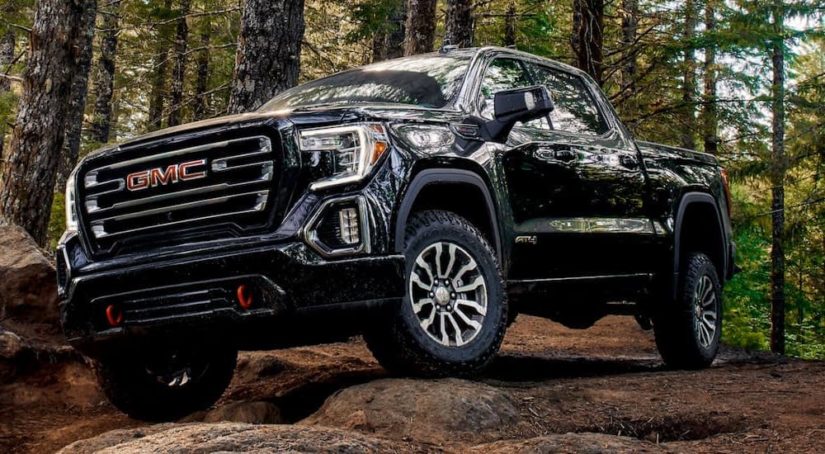The pickup truck is a versatile vehicle that can be used for all kinds of tasks, from delivering supplies and equipment to work sites to moving bulky furniture across town to engaging in recreational activities ranging from camping to tailgate parties. Because they come in handy in a variety of situations, trucks come in a variety of shapes and sizes. When looking at used trucks for sale at your local dealership, all of this variety can feel overwhelming, especially if you’ve never bought a pickup before. But if you know what you’re going to be using your truck for, then it can be fairly simple to narrow your options down to the models that will work best for you. Get ready to delve into many of the major factors you should consider when buying a truck.
Compact, Midsize, or Full-Size?
A truck’s size can affect your driving experience in several ways. First, bigger trucks are generally more powerful, giving you more towing and hauling capability. On the other hand, smaller trucks are easier to maneuver in tight spaces, whether that’s off-road trails with twists and turns or shopping center parking lots. Plus, smaller trucks tend to be more affordable, both in terms of sticker price and fuel costs, so if you aren’t going to use all of the power of a big truck, there’s not much sense in paying extra for it.
Full-size trucks are the most popular option in America. In fact, the three best-selling vehicles every year since 2014 have been the full-size Ford F-150, Chevy Silverado 1500, and Ram 1500. Of course, there are some beloved midsize models as well, like the reliable Toyota Tacoma, the adventurous Chevy Colorado, and the versatile Ford Ranger. Compact trucks are less common, but there are a few good options out there, like the Ford Maverick and Hyundai Santa Cruz.

Light-Duty or Heavy-Duty?
If you’ve decided that you need the power and capability of a full-size truck, it’s on to the next question: whether to opt for a light-duty model or upgrade to a heavy-duty truck. Instead of having unique models, heavy-duty trucks are generally beefier versions of familiar nameplates. For example, the Ford F-150, Ram 1500, and Chevy Silverado 1500 are all light-duty trucks, while the Ford F-250 and F-350, Ram 2500 and 3500, and Silverado 2500 HD and 3500 HD are their heavy-duty equivalents.
Heavy-duty trucks are significantly more powerful, with towing and hauling capacities that most drivers will never need. However, if you’re a professional who really needs that extra muscle on the job or you regularly vacation with a particularly heavy trailer, it’s time to consider a heavy-duty truck. But since they’re more expensive and less fuel-efficient, you should probably stick to light-duty models if you don’t have a practical need to upgrade.
Note that most heavy-duty trucks are offered in a “three-quarter-ton” (250 / 2500) and “one-ton” (350 / 3500) variants. Generally, the only major mechanical difference is the suspension, but a one-ton model can offer substantially higher payload and towing capacities than a three-quarter-ton truck. Particularly since one-ton pickups are available with dual rear wheels to support heavier weights. If you want the ultimate towing machine, a one-ton “dually” is the used truck for you.
What Fuel Type?
As you can imagine, most trucks are powered by gasoline engines. But that’s not the only option on the table. For one thing, many trucks also offer a diesel powertrain, especially heavy-duty models. While diesel doesn’t have the best reputation, it’s typically more fuel-efficient than gasoline, giving diesel-powered trucks higher MPG figures than their gas-powered equivalents. Diesel is also better at providing torque, which is very important for towing heavy loads. Finally, diesel engines have come a long way since the bad old days of too much noise and smog; modern options are virtually indistinguishable from gas engines.
Hybrid trucks are also an option. Models like the Ford Maverick Hybrid and Toyota Tundra Hybrid get better fuel economy by supplementing their gas engines with electric motors powered by batteries. The additional motor often adds more power as well. Taking things even further, there are now some all-electric trucks out there, like the Ford F-150 Lightning, Rivian R1T, and GMC Hummer EV. In addition to being extremely efficient, electric models often offer extra benefits. This can include a spacious front trunk where the engine would be on a gas-powered model or an onboard power supply that can be used to power a worksite, campsite, or even a whole house.
Unibody vs Body-On-Frame?
Body-on-frame construction is extremely common among trucks. In fact, many would argue that it’s part of the definition of a truck. But the unibody construction used in cars provides a smoother, quieter ride on the road, so some automakers have opted to use it to give their smaller pickups better handling and a more car-like feel, though generally at the expense of power and off-road capability. Unibody vehicles with a pickup bed include the midsize Honda Ridgeline and the compact Ford Maverick and Hyundai Santa Cruz. However, the vast majority of the used trucks out there are still traditional body-on-frame.
Which Trim Level?
Most models, whether trucks, cars, or SUVs, are split into various trim levels, giving buyers a range of price points and features to choose from. Basic trim levels are the most affordable and the most spartan. Upgrading to higher trim levels generally means paying extra to get more features, such as heated seats, bigger touchscreens, more driver-assistance technology, or higher-quality materials in the cabin. Some trucks also have trims that are specifically designed for off-roading. These trims, like the GMC Sierra 1500 AT4X, Toyota Tacoma TRD Pro, and Ram 2500 Power Wagon, usually include features like a lifted suspension, underbody skid plates, and tow hooks.

Cab Sizes and Bed Lengths?
This one is pretty simple. Most automakers offer their trucks in various cab and bed sizes, so there can be plenty of variation within a single model or even a single trim level. When looking at cab sizes, consider how many people you want to be able to take in your truck. A regular cab has two doors and can typically accommodate up to three passengers. An extended cab will provide a back seat with small rear doors. With a crew cab, you’ll get a more spacious backseat and four full-size doors. When it comes to the bed, lengths can range from five feet up to eight feet, so think about what kind of cargo you’ll be hauling and how much room you need to fit it.
Take Things One Step at a Time
For some drivers, it’s easy to figure out what kind of truck they need right off the bat. If you’re looking for a midsize off-road truck, for instance, you’ve immediately narrowed your search down to a handful of models. But if you’re not sure exactly what you need, then getting started can feel intimidating. The best way to avoid getting too stressed when looking at all of these factors is to take them one at a time. Do that, and it should be pretty simple to figure out what your ideal used truck looks like.



